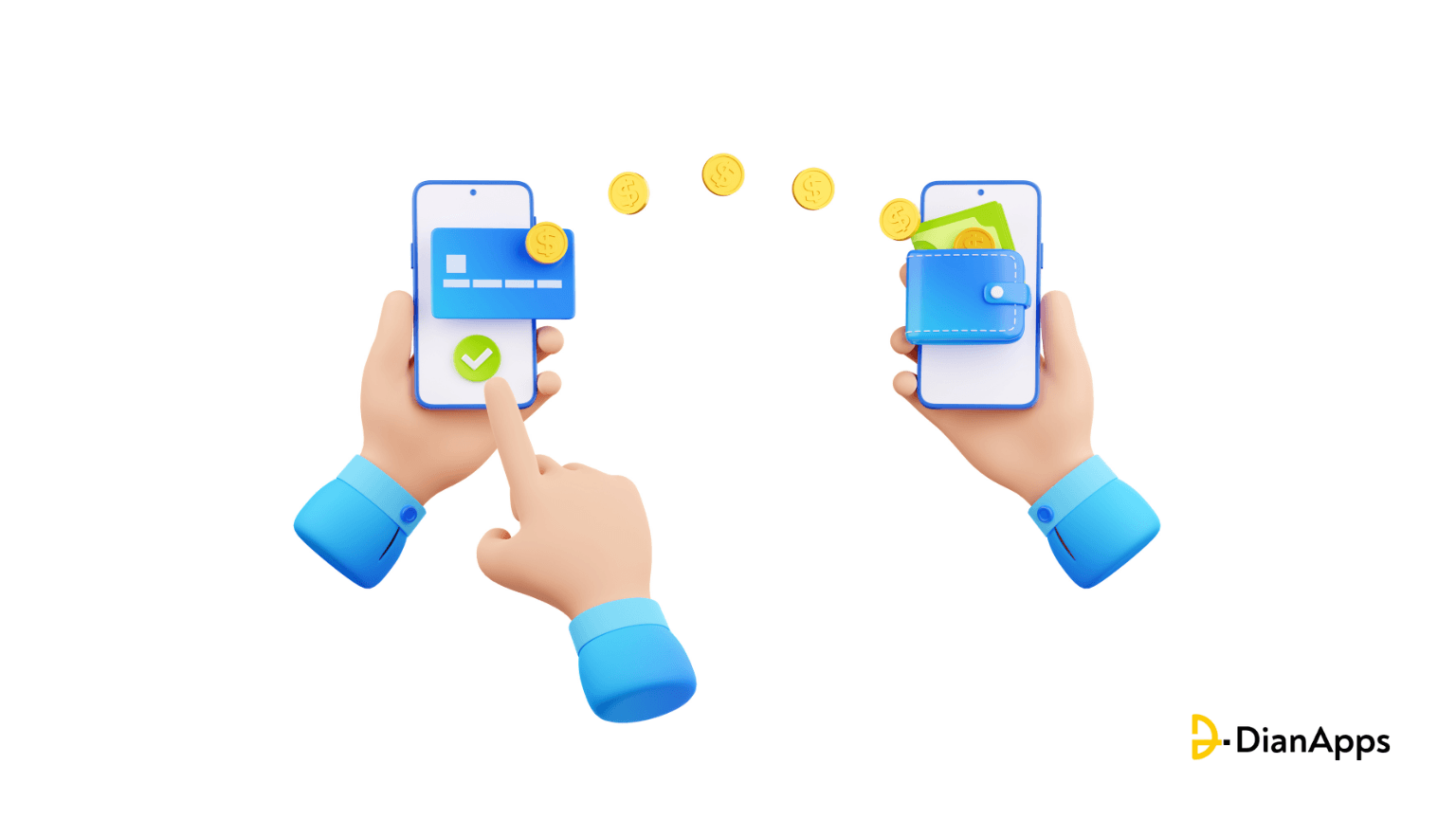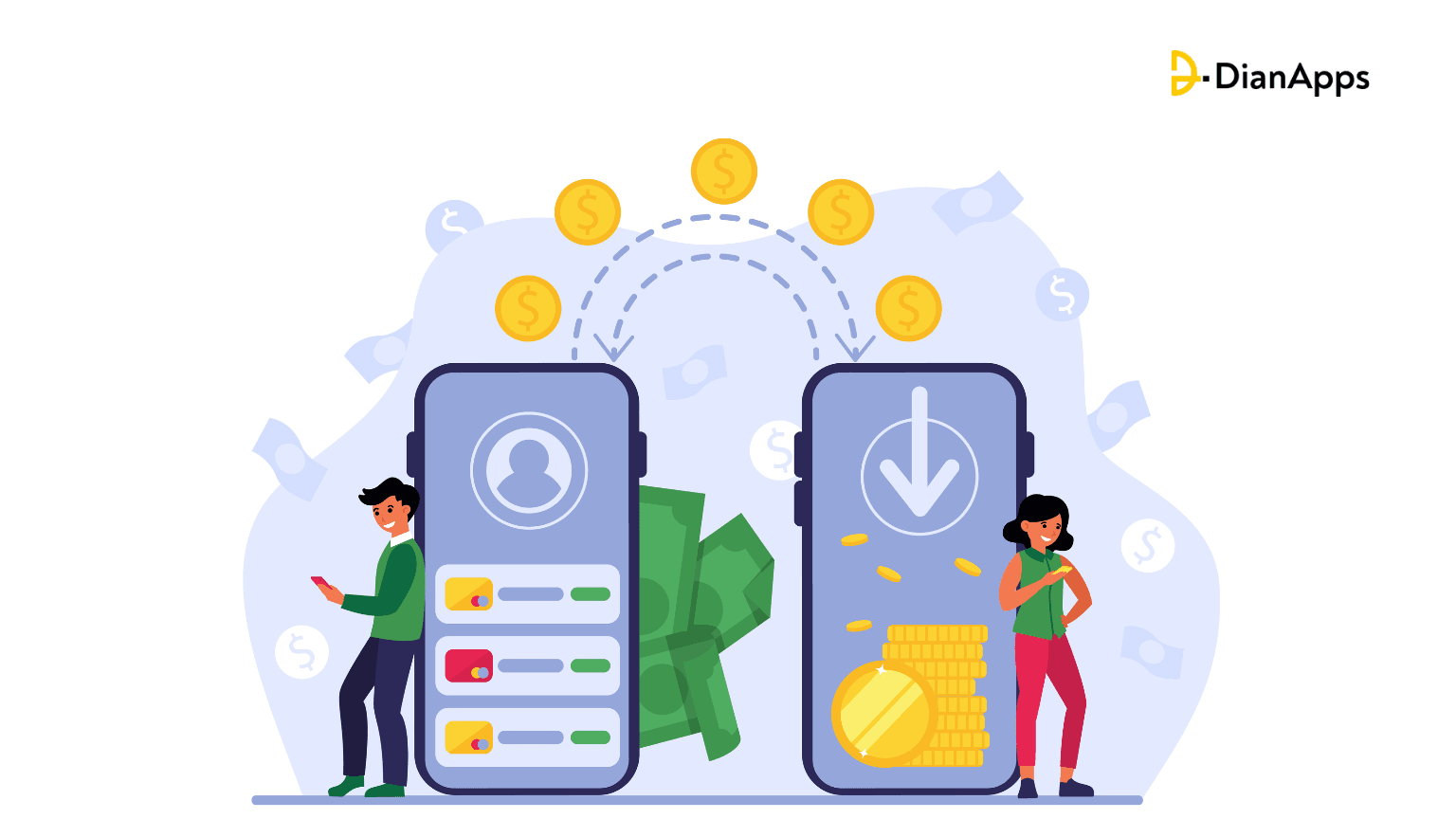Money transferring has without a doubt revolutionized the old way of dealing with exchanging goods and services. Gone are the days when standing in lengthy queues and neverending bureaucracy were part of our lives. Today, with the constant shift in demand, the rise of digitization is weighing for good.
Unlike traditional banks, online banking is a big buzzword for citizens all across the world. The annual growth rate of the global mobile app development payment market is accounted to reach 23.8 percent between 2021 and 2026. Which is supposedly a huge hike from the $1.434 Trillion in 2020.
As a result, the creation of online banking apps such as Revolut has lately gained traction. Revolut, which launched in 2015, expanded to 350,000 active daily users in three years. This direct-to-consumer platform is now worth $5.5 billion.
So, creating money transfer software might be extremely advantageous and profitable. This post will teach you how to create a successful money transfer app.
The Importance Of An Online Money Transfer App?
Online money transfer app development services are becoming increasingly important in today’s digital economy for several reasons:
1. Gives Users Convenience:
Online money transfer apps allow users to send and receive money from anywhere, at any time. This eliminates the need to physically visit a bank or a money transfer office, saving users time and effort.
2. Enables Great Speed:
Digital money transfer apps offer fast and efficient transactions that can be completed within minutes. This is particularly useful for urgent transfers, such as paying bills or sending emergency funds to family members.
3. Is Highly Secure:
Most online money transfer apps use advanced security measures to protect users’ personal and financial information. This includes encryption, multi-factor authentication, and biometric authentication, making it safer than traditional transfer methods.
4. Extreme Cost Effectiveness:
Online money transfer apps often charge lower fees than traditional money transfer methods, such as wire transfers or cashier’s checks. This can save users money in the long run.
5. Easy Access to International transfers:
Online money transfer apps also make it easier and more cost-effective to send and receive money internationally. This is particularly useful for individuals who have family members or business associates in other countries.

Types of Money Transfer Apps
Before delving into the fundamentals of creating a money transfer app, you need to be familiar with many such apps.
Transactions done online or between two programs are referred to as peer-to-peer (P2P) or person-to-person payment systems. This implies that only one user may use the app to transfer money from a bank account or credit card. The most common P2P payment systems are mobile operating systems and independent and online financial services. Let’s take a quick look at each of these business models to see which one best fits your needs.
1. Mobile Operating Systems
You should be familiar with popular P2P services like Apple Pay and Android Pay. They cannot be categorized as standalone apps because they are integrated device functions. In any case, the increasing popularity is due to the ability to make contactless payments for transactions anywhere NFC technology is enabled or PoS terminals are equipped with NFC technology. Users of Android or Apple smartphones can only send money to other users of the same operating system.
2. Services provided by themselves
The following group includes prominent independent service providers such as PayPal and Venmo. Users of these distinct services are given electronic wallets in which they may conduct P2P payments using bank cards. These services also enable consumers to store their money without having to withdraw it from a bank account. As a general rule, all independent services accept Visa and MasterCard credit cards. Nevertheless, it is dependent on the P2P service’s special characteristics.
3. Services for online banking
The banking sector needs to keep up with global developments in the face of increasing competition among digital payment alternatives on the market today. As a result, several banks are beginning to offer peer-to-peer (P2P) online services to their customers. To take payments, shops must often have the appropriate hardware. Zelle and Dwolla are the most well-known examples of bank-centric applications.
Money Transfer App Critical Features
When it comes to examining functionality while developing a money transfer app, you must first describe all of the important components of your future system. The most significant features are driven mostly by the need to fulfill not just user experience requirements, but also data privacy rules and payment restrictions.
As a result, we recommend that you pay attention to the following list of fundamental features of a money transfer platform:
1. E-wallet
A digital wallet, often known as an E-wallet, is a storage location for customers’ monies and bank card information. Regardless of the user’s location, one aspect of this online service is the ability to make contactless payments without having to open a new bank account each time.
2. Statistics on Payments;
The payment statistics system’s unique feature is that users may conveniently and efficiently manage their funds. It enables the visualization of all user transactions based on characteristics such as volume, status, country, and receiver. As a consequence, consumers get a more seamless experience and may interact with their financial information more easily.
3. Payment of bills;
Another unique benefit of custom money transfer software is the ability to make payments online at any time and from any location. Using invoice scanning, you may make your application more appealing to clients and competitive with other market competitors.
4. Notifications;
Let your users be notified of various money transactions, such as fresh funds, frequent money transfers, or crucial monthly payments. This implies that the user gets alerted in real-time whenever any action occurs in the application.
5. Transfers from one country to another;
You instantly invest in your clients’ loyalty by allowing them to streamline the money transfer procedure. Users may perform or receive international money transfers in a matter of seconds, avoiding the customary delays and expensive costs.
6. Currency conversion.
The addition of currency exchange options will increase the worth of your potential users. Users will be able to get dollars, euros, or other currencies with a few swipes anytime they want, without having to physically visit currency exchange offices.
As you can see, the aforementioned list of fundamental functionalities is a must-have for your money transfer platform. Even if you have your own preferences and reasons for adding new features, our skilled staff can handle it.
Just keep in mind that on the backend, the greatest degree of data protection, general privacy, and compliance with all regulatory requirements must be applied.
Step-By-Step Guide On Developing A Money Transfer App
Once we’ve gone over the different types of money transfer systems and their key features, we’ll go through the key stages of getting started with a mobile app development company. Every software startup begins with the exploration phase. This stage covers market research as well as overall project estimation. After establishing the project’s baseline, the team begins to accomplish the tasks. The next steps are divided as follows:
1. Making a user-friendly UX design
Designers begin work at this stage to build a multilingual user interface that is suitable for a number of devices such as smartphones, tablets, and desktop computers. The dashboard of your application should be straightforward and user-friendly, and it should fulfill all user needs for seamless and easy access to the system’s functionalities, especially in low-connectivity locations.
2. Development of a Money Transfer Portal
Your team will work on the creation of a so-called money transfer platform while integrating all of the essential functionality. This signifies that the aforementioned functions are being implemented at this point. As a result, mobile app developers will create e-wallets that allow users to send and receive funds via different channels in many countries, conduct contactless bill payments, international money transfers, currency conversion, and so on. During this phase, developers must also incorporate the ability to establish limitations on sending/withdrawing funds, the number of transactions per day, and other features, so that their future clients may govern their cash and financial activities in a variety of ways.
3. Modules for User Management
Following that, it is strongly advised to incorporate user management modules to handle customer accounts. Your future app system should include distinct interfaces for cashiers, administrators, and auditors, as well as for building balance histories and tracking account activity. Other options include running marketing campaigns, creating promotional coupons, and engaging customers via emails and messaging.
4. Accounting and reporting in real time
Your user will be able to monitor various transactions and utilize analytics to build reports, and balance sheets, and predict profits and losses by utilizing real-time reporting and accounting tools. The availability of reporting and accounting often assists consumers in setting limitations and controlling their assets.
5. Security
Security concerns are frequently a challenge in most circumstances. As previously said, it is important to consider all relevant laws and municipal rules, as well as compliance with requirements for funding terrorism, money laundering, and so on. Another component is to give users the best level of system security possible, allowing harmful acts to be readily avoided.
As you may have realized, developing money transfer software is not a simple process. This procedure, however, will be simplified by having a clear separation of duties within a professional software team. By the way, if you’re curious about how the whole app development process is structured, check here to learn more.
Cost Of Creating A Personalized Money Transfer App
Before delving into the more precise cost of app development services, consider the typical prices across prominent app development destinations.
- Asia: The Philippines, China, and India are among the Asian countries having the biggest demand for these services. Software developers in the Philippines might charge up to $ 50 per hour, whereas developers in China and India charge around $ 25 per hour.
- Eastern Europe: According to Clutch, prices in Eastern European nations such as Ukraine, Poland, and Belarus range between $25 and $50.
- Rates in Brazil, Mexico, and Argentina range from $ 25 to $ 100 per hour, according to the same Clutch assessments.
According to the available statistics, the location of the software firm is one of the elements influencing the ultimate cost. In any event, other aspects have more weight when evaluating the cost of developing a custom money transfer app. Add to this the size and complexity of the desired features, legal fees, the requirement for extra third-party services, application maintenance, marketing expenditures, and so on.
As a result, after all of the criteria have been established as fundamental features for the application, we will be able to evaluate your project. Please contact us if you require any other information.
Wrapping Up
In short, the new ideals of digital financial services are laying the groundwork for eventual widespread acceptance. Consumer-centric digitization is increasingly replacing conventional means of providing financial services. Furthermore, the most popular technologies give fresh significance to future advances in money transfer app creation.
While there are frequently possible obstacles in developing complicated systems, banks, and remittance providers continue to place a premium on the easy, cost-effective, and quick maintenance of such applications. Particularly when an app development company offers to share its best practices for developing sturdy and efficient solutions.
Hence, prepare your company for internet success. Our mobile app developers are always ready to quickly bring your greatest money transfer app ideas to reality!










Leave a Comment
Your email address will not be published. Required fields are marked *